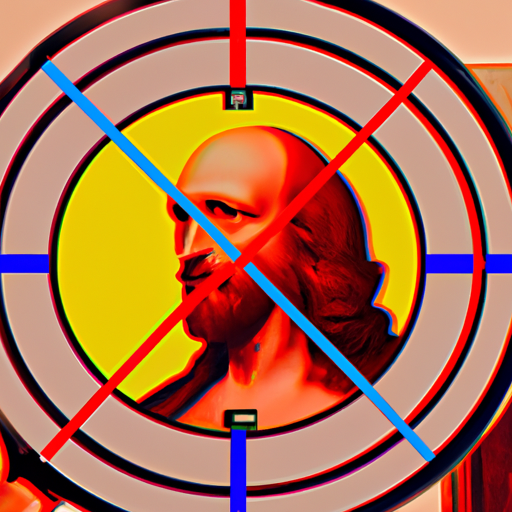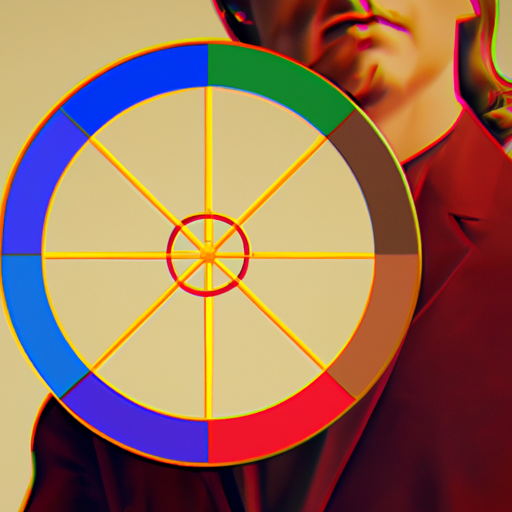
-
Table of Contents
- Analyzing Leonardo da Vinci’s Vitruvian Man from a Designer’s Perspective
- The Historical Context
- The Proportions and Symmetry
- Applying the Principles in Design
- 1. Balance and Symmetry
- 2. Proportions and Scale
- 3. Human-Centered Design
- Case Studies: Vitruvian Man in Contemporary Design
- 1. Apple’s Product Design
- 2. Architectural Masterpieces
- Conclusion
Analyzing Leonardo da Vinci’s Vitruvian Man from a Designer’s Perspective

Leonardo da Vinci’s Vitruvian Man is one of the most iconic and influential drawings in the history of art and design. Created in the late 15th century, this masterpiece combines art, science, and mathematics to depict the ideal proportions of the human body. From a designer’s perspective, the Vitruvian Man offers valuable insights into the principles of balance, symmetry, and harmony. In this article, we will delve into the significance of this artwork and explore its relevance in contemporary design.
The Historical Context
Before diving into the analysis, it is essential to understand the historical context in which Leonardo da Vinci created the Vitruvian Man. During the Renaissance, there was a renewed interest in the classical world and a desire to revive the knowledge of ancient civilizations. Leonardo, being a polymath, sought to combine his artistic skills with scientific inquiry.
Leonardo’s inspiration for the Vitruvian Man came from the writings of the ancient Roman architect Vitruvius, who described the ideal proportions of a human body in relation to architecture. Leonardo aimed to visually represent these principles through his drawing, showcasing his deep understanding of both art and science.
The Proportions and Symmetry
One of the key aspects of the Vitruvian Man is its focus on proportions and symmetry. Leonardo meticulously studied the human body and its measurements to create a harmonious composition. The figure is divided into various sections, each highlighting a specific ratio or relationship.
The most prominent feature of the Vitruvian Man is the perfect symmetry. The figure is positioned within a circle and a square, with the arms and legs extended to touch the boundaries of both shapes. This symmetry represents the balance and harmony that Leonardo sought to achieve in his artwork.
Leonardo’s attention to detail is evident in the precise measurements he incorporated into the drawing. For example, the distance between the navel and the bottom of the feet is equal to the distance between the navel and the top of the head. This proportion, known as the “golden ratio,” is a mathematical concept that has been revered by designers and artists for centuries.
Applying the Principles in Design
The principles observed in the Vitruvian Man can be applied to various design disciplines, including architecture, graphic design, and product design. Let’s explore how these principles can enhance the design process:
1. Balance and Symmetry
Balance and symmetry are fundamental principles in design. By achieving visual equilibrium, designers can create a sense of stability and order. The Vitruvian Man’s perfect symmetry serves as a reminder of the importance of balance in design compositions.
For example, in architecture, symmetrical facades can create a sense of grandeur and elegance. In graphic design, symmetrical layouts can convey a sense of professionalism and order. By incorporating balance and symmetry into their designs, designers can create visually pleasing and harmonious compositions.
2. Proportions and Scale
The Vitruvian Man’s emphasis on proportions and scale can guide designers in creating aesthetically pleasing designs. Understanding the relationships between different elements and their sizes can help designers achieve a sense of harmony and coherence.
In product design, for instance, designers often consider the proportions of objects to ensure they are visually appealing and ergonomic. Similarly, in graphic design, understanding the proportions of typography and images can help create balanced and visually engaging layouts.
3. Human-Centered Design
The Vitruvian Man places the human body at the center of design. This concept aligns with the principles of human-centered design, which focuses on creating products and experiences that meet the needs and preferences of users.
By considering the proportions and dimensions of the human body, designers can create products that are comfortable, accessible, and intuitive to use. This approach is particularly relevant in fields such as industrial design and user interface design, where the user’s experience is paramount.
Case Studies: Vitruvian Man in Contemporary Design
The influence of the Vitruvian Man can be seen in various contemporary design projects. Let’s explore a few case studies that demonstrate the application of Leonardo’s principles:
1. Apple’s Product Design
Apple is renowned for its sleek and minimalist product designs. The company’s commitment to simplicity and elegance aligns with the principles observed in the Vitruvian Man. Apple’s products often feature clean lines, balanced proportions, and a focus on user experience.
For example, the iPhone’s design incorporates symmetrical elements, such as the centered home button and the evenly spaced icons on the screen. These design choices create a sense of balance and harmony, enhancing the user’s interaction with the device.
2. Architectural Masterpieces
Many architectural masterpieces draw inspiration from the principles observed in the Vitruvian Man. The Sydney Opera House, designed by Jørn Utzon, is a prime example. The building’s sail-like forms and symmetrical composition create a visually striking and harmonious structure.
Similarly, the Guggenheim Museum in Bilbao, designed by Frank Gehry, showcases a balance between organic and geometric shapes. The museum’s unique design captures the essence of the Vitruvian Man’s principles, creating a visually captivating space.
Conclusion
Leonardo da Vinci’s Vitruvian Man continues to inspire and influence designers to this day. Its emphasis on balance, symmetry, and proportions provides valuable insights for designers across various disciplines. By applying these principles, designers can create visually pleasing, harmonious, and user-centered designs.
Whether it’s in architecture, graphic design, or product design, the Vitruvian Man serves as a timeless reminder of the importance of balance and harmony in the creative process. As designers continue to push the boundaries of innovation, Leonardo’s masterpiece remains a guiding light, reminding us of the enduring power of art and design.
